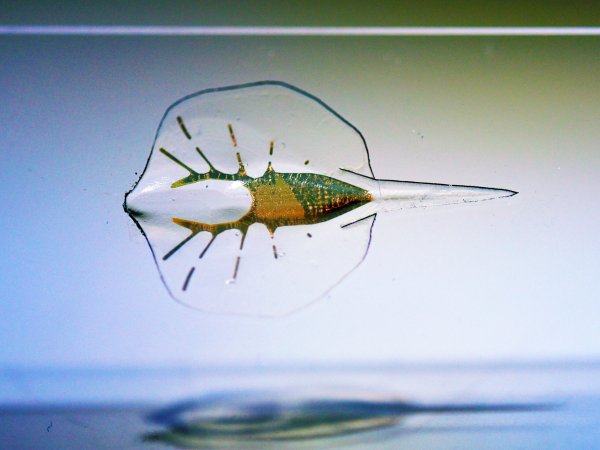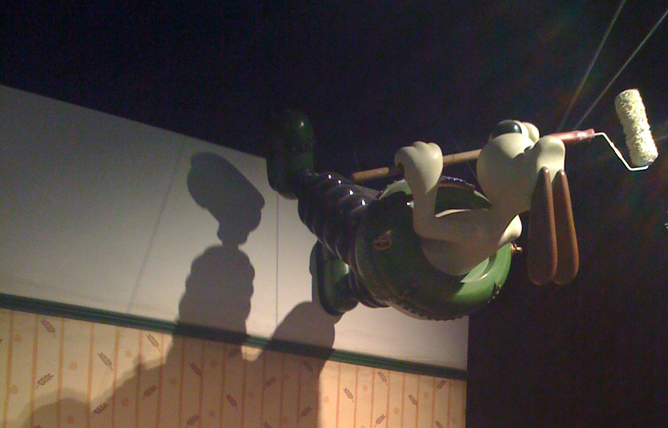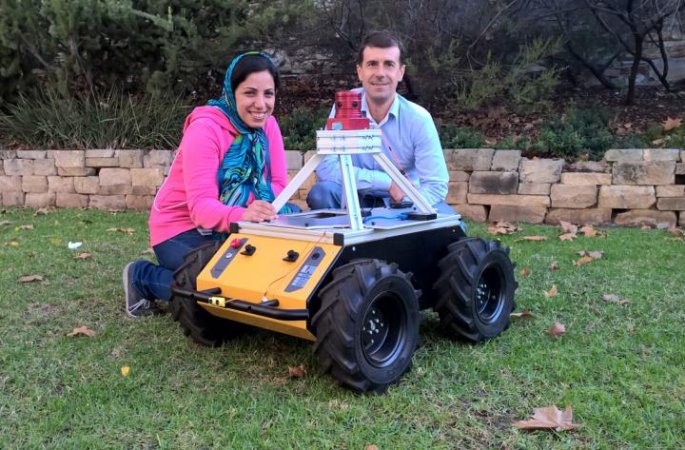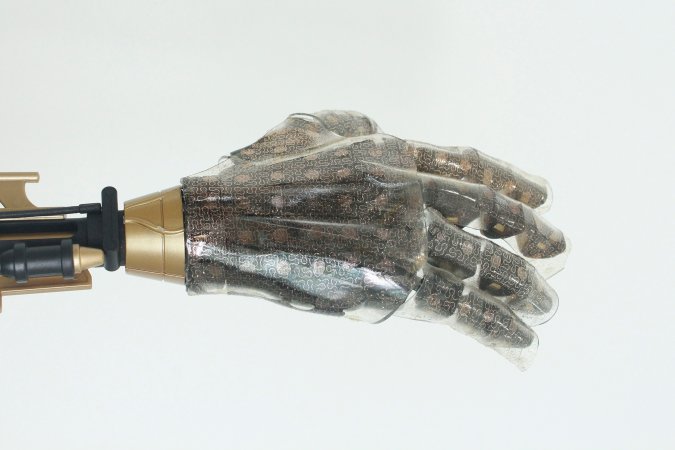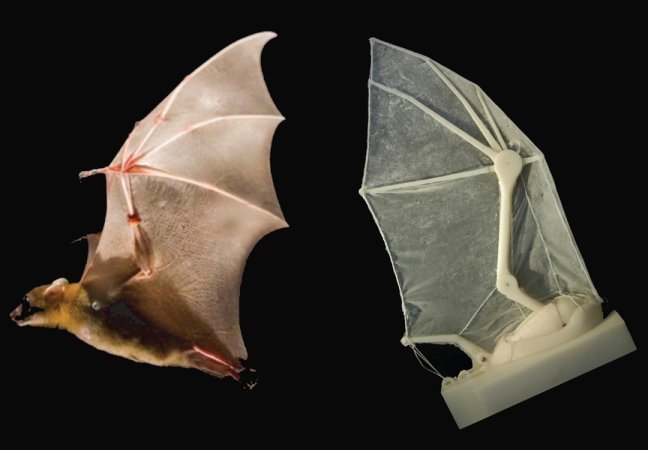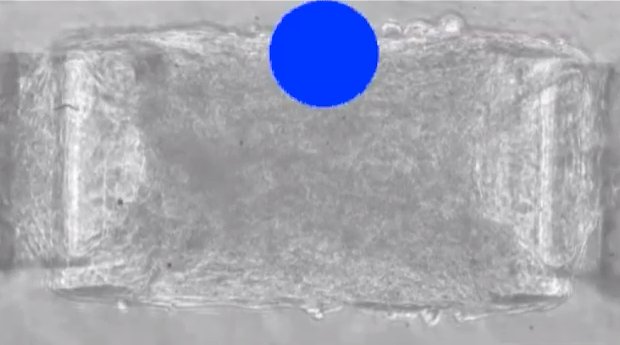

Most living organisms use soft, muscle-based systems to move. Octopuses and spiders don’t need heavy motors or metal gearboxes to swivel their bodies and walk from one place to another.
“Even if it may have an exoskeleton, like insects, or an endoskeleton, like us, we’ve got components in us that are soft,” says Jonathan Rossiter, a professor of robotics at the University of Bristol in the UK. “And yet, all robots at the moment are hard. If you can make future robots completely soft, or at least, exploit some of these soft features, then you can make them smaller, simpler, more compatible with the environment.”
Flying micro-robots tend to have an indirect connection between the power system and the wings, segmented by components like motors, gears, elastics, or some kind of lever mechanism. But that’s not really the way wings connect in insects and birds.
Take bees, for example. They’ve evolved such that there’s “almost direct coupling between the muscles that drive it and the wings, which means you haven’t got any of the extraneous stuff between them,” says Rossiter. Insects, in general, “basically connect their muscles inside their bodies to the end of their wings. And then they can pull and let go over and over incredibly fast, and incredibly efficiently.”
This is where a new system called LAZA flies into the picture—that stands for liquid-amplified zipping actuators. This system can be directly joined to a flying appendage.
LAZA was designed by engineer Tim Helps, who developed the system in his research at the University of Bristol. At the core of the project is a new type of artificial muscle that can move a robot’s wings. “I’m a muscle person. I like to make artificial muscles,” says Helps. “The bit I’m most proud of is producing something that has more power for the same weight than an insect or mammal’s equivalent piece of muscle.”
It’s currently used to power a set of plastic-paneled wings. The prototype, detailed in Science Robotics this week, looks like a golden snitch from Harry Potter. It’s not autonomous, and it’s hardly a robot. Currently, the creation is a body without a brain. The “muscle” is held in a temporary rectangular frame that’s lightly suspended by an offshoot of thin wires.

“What we’ve got is wings flying across the lab. And wings on their own are not like an animal or a robot,” says Rossiter. “That’s why the guide wire is there, so the wings don’t just dive to the ground.”
In laboratory trials, it can just generate forward thrust up to 5.73 millinewtons on 243 milliwatts of electrical power at speeds up to 0.71 meters per second (that’s just 1.5 mph).
[Related: Humans are so social that we try to fit in with robots]
It’s powered by electrostatics rather than electromagnetism (which uses a high current to generate a magnetic field), and it builds off previous research that Helps and Rossiter did on electro-origami robots.
Electrostatics systems use the attraction of opposite charges and a physics property called Coulomb forces to create movement. The wing material is sandwiched between two electrode plates that come together at the hinge. Charging and discharging the electrodes will allow the wing to flip flap between the two sides.

“One of the reasons the LAZA system works better than previous electrostatic actuators is because at this zipping point here, where the highest force is generated, we have a tiny bit of oil in there,” says Rossiter. “This bit of oil increases the forces, it increases the electric field density,” and that’s because it’s a good insulator, and it allows the system to run for a million cycles without degrading in performance.
Because the speed at which the wings flap at and how far they’re flapping can be tweaked, the team believes that this type of motion generator can better orient itself in space than a traditional motor system.
The controls for the actuator are not completed yet. The prototype robot has its power off-board. “The drive system is there, but the rest of the robot isn’t. What we want to do is take these wings and put them onto a slightly more sophisticated body, then take them out into the environment,” says Rossiter.

But first, they have to decide on how small or large they want to make the robot. Size will influence the designs of the wings and the body. The present wing design, with a wingspan of 150mm, is modeled after a firefly. These wings tilt as they go up and down.
With electrostatics, if the system was shrunk down, it would have more relative strength, which means that it would be able to lift more body weight. But it could be challenging to miniaturize everything.
“When it’s smaller, it can definitely be more insect-like because they’ve got particular bodies with particular balances and a center of mass that fits nicely with it,” Rossiter explains. If the robot was bigger, “then you probably wouldn’t make it as an insect design, you’d probably make it more of a small bird design.”


